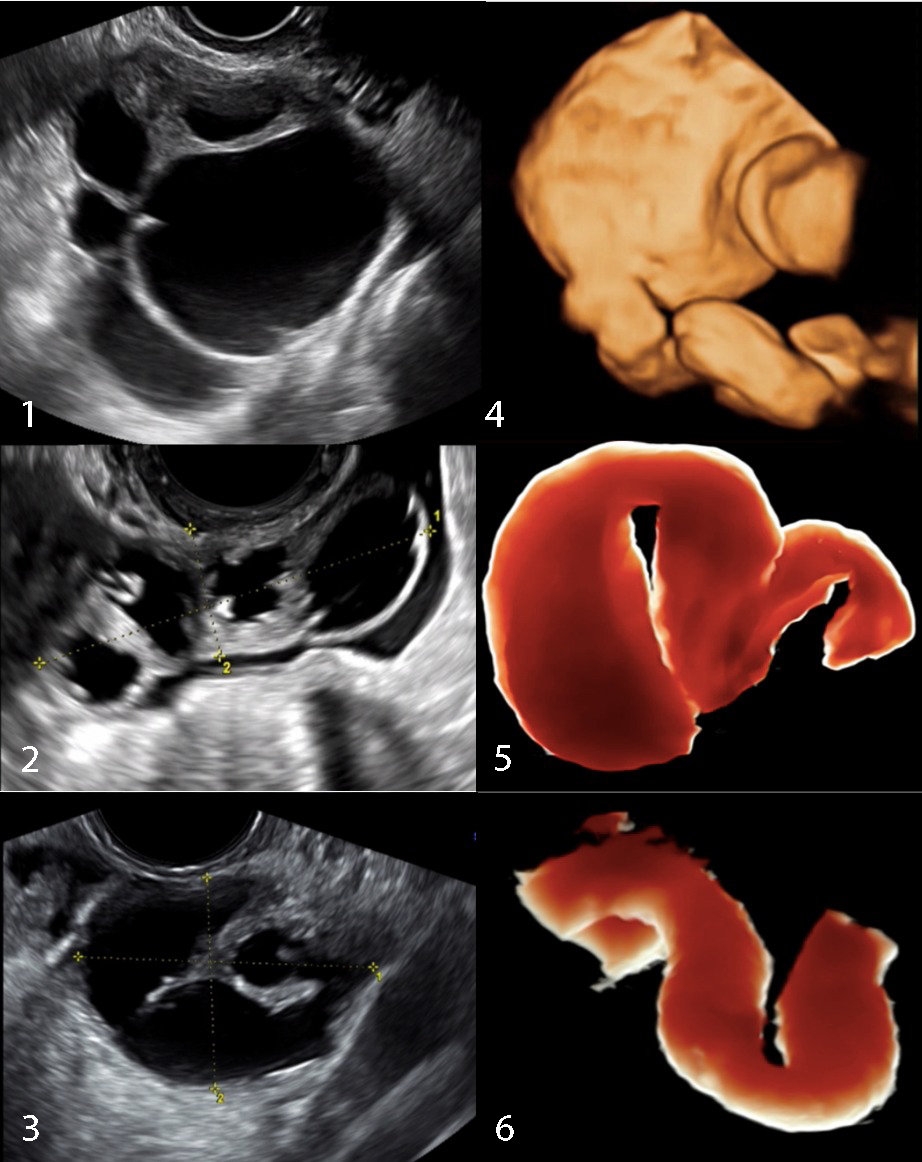The importance of 3D ultrasound acquisition for an accurate diagnosis
Image Description
Hydrosalpinx is the dilatation or distension of the fallopian tube following distal tubal occlusion. The disease may affect the distal, the proximal, or the entire tube [1]. The etiology varies widely, but the main causes for the distention include endometriosis, previous abdominal or pelvic diseases, and pelvic inflammatory disease (PID). PID is mostly caused by Neisseria gonorrhoeae or Chlamydia trachomatis and results in intense inflammatory processes that lead to obstruction of the distal part of the tube. The fluid that accumulates in the tube results from the natural transitional mucosal secretion and the inflammatory process [2]. The hydrosalpinx impairs both the spontaneous conception and success rates in assisted reproductive technology (ART). 3D ultrasonographic evaluation has gained importance in the differentiation of adnexal tumor masses. The treatment for hydrosalpinx consists of salpingostomy, salpingectomy, or proximal tubal occlusion [3].
We present a case of a 29 years old patient who was referred to our clinic for a multiloculated ovarian cyst (Fig.1), (Fig.2), (Fig.3). The treatment, in this case, would have been surgical after a prior ROMA score, which would further impatient the patient. After performing a 3D volumetric acquisition, we realized that it was, in fact, a hydrosalpinx (Fig.4), (Fig.5), (Fig.6).
What we want to emphasize is the importance of correct preoperative diagnosis. In the case of intraoperative diagnosis, case management would have been more difficult, as the patient would not have prior consent. Thus, 2 possible surgeries could be avoided.
References
. Gil Y, Krishnamurthy S, Feng J, Tulandi T. Hydrosalpinx Sclerotherapy. J Obstet Gynaecol Can. 2020 Oct;42(10):1193. doi: 10.1016/j.jogc.2019.03.006. Epub 2019 Aug 8. PMID: 31402269.
. Mohseni M, Simon LV, Sheele JM. Epidemiologic and Clinical Characteristics of Tubo-Ovarian Abscess, Hydrosalpinx, Pyosalpinx, and Oophoritis in Emergency Department Patients. Cureus. 2020 Nov 23;12(11):e11647. doi: 10.7759/cureus.11647. PMID: 33376658; PMCID: PMC7755693.
. Ng KYB, Cheong Y. Hydrosalpinx - Salpingostomy, salpingectomy or tubal occlusion. Best Pract Res Clin Obstet Gynaecol. 2019 Aug;59:41-47. doi: 10.1016/j.bpobgyn.2019.01.011. Epub 2019 Jan 29. PMID: 30824209.


